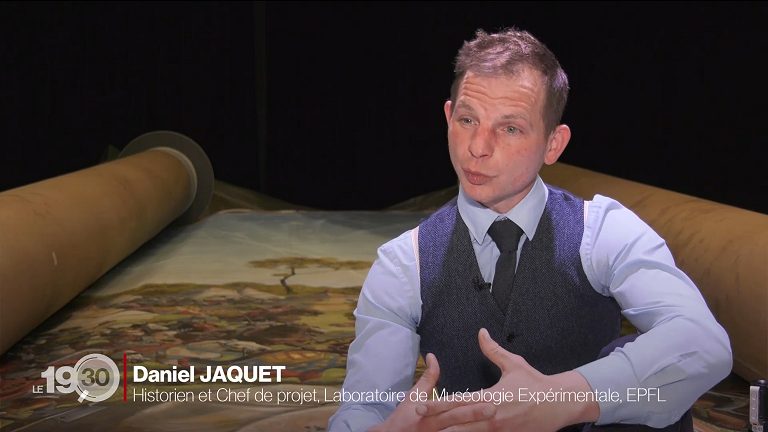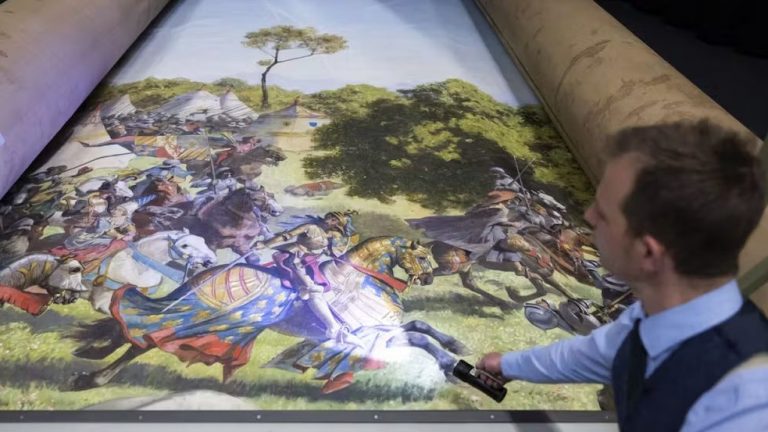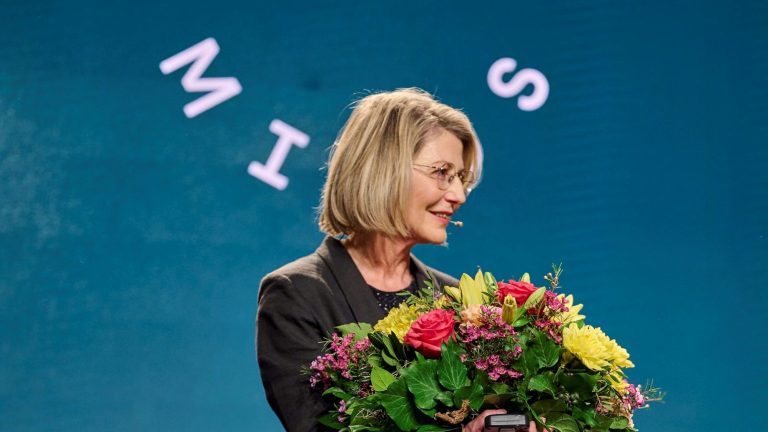
Sarah Kenderdine from the Laboratory for Experimental Museology at EPFL, Fabienne Kilchör, co-founder of the Bern agency Emphase and Max Frischknecht, lecturer on the Design+Art course at HSLU, are attending this meeting of our Data Visualization group. The focus this time is “art” – we are looking forward to exciting presentations!
20.06.2024, 4.30 p.m.–6.30 p.m. – Effingerstrasse 47 / Haslerstrasse 30, 3005 Bern (Room E102) and online (hybrid)

The City of Geneva is organizing a day of reflection on the social and societal utility of museums, open to all, on Tuesday, June 18, 2024, at the MEG.
Professor Sarah Kenderdine from École Polytechnique fédérale de Lausanne discussed “The transformative power of digital museology” during Part 2: Taking power and explored broader implications during the round table, moderated by Gabriel de Montmollin, Director of the International Museum of the Reformation, Geneva.

On 26 through 29 May 2024, Eye Filmmuseum, the University of Amsterdam and the Laboratory for Experimental Museology (eM+) at École Polytechnique Fédérale de Lausanne (EPFL) will present the 9th Eye International Conference, this time with the topic ‘Presenting Audiovisual Collections: Experiments and Explorations’.

Commemorating International Museum Day, the International Museum Expo is organized annually starting on May 18. The second edition took place at Science City in Kolkata from May 18–19, 2024. Following the opening session, Sarah Kenderdine, Director of the Lab for Experimental Museology at EPFL in Lausanne, Switzerland, delivered a keynote address on “Museum: A Confluence of Art, Science, and Technology”.

On May 10, 2024, the Academy of Fine Arts of Tsinghua University hosted a lecture titled “Computational Museology: Art and Science in the Age of Experience” in the C528 Lecture Hall. Professor Sarah Kenderdine from EPFL was invited to speak on topics including interactive archives and emerging narratives, deep fakes and blockchain sovereignty, embodied knowledge systems and performative interfaces, and the scientific visualization of museums in the era of experience.

Join us for a workshop on computational museology with Professor Sarah Kenderdine, Director and Lead Curator of EPFL Pavilions, and gain practical insights from her extensive curatorial experience. Explore the seamless integration and practical application of immersive visualization technologies, visual analytics, aesthetics, and cultural big data.

Cosmos Archaeology, Exploring the Universe through Art and Science is travelling to China, presented at the Shanghai Astronomy Museum from 18 May to 17 September 2024. The exhibition is co-curated by Sarah Kenderdine from EPFL’s Laboratory for Experimental Museology (eM+) and EPFL Pavilions, Jean-Paul Kneib from EPFL’s Laboratory of Astrophysics (LASTRO), and independent Chinese curator Iris Long. It highlights collaborations between artists and prominent astronomical projects, including the MUST Telescope from Tsinghua University and the Chinese SKA Science Projects led by the Shanghai Astronomical Observatory..
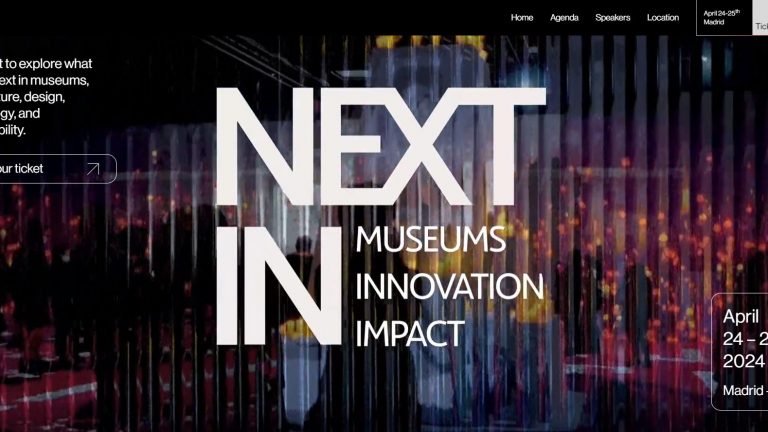
April 24 – 25 2024, Madrid, Spain
NEXT IN is a summit that brings together leaders from across the cultural sector to exchange ideas, share best practices, and explore the future. It provides a space to showcase innovative projects that are transforming public spaces and creating meaningful visitor experiences. The summit features some of the most influential global figures in museums, architecture, and design. It offers a unique experience to explore the creativity and innovation shaping current and future trends in the industry.

Computational Museology: Art & Science in the Age of Experience
17.30 – 18.30 CET, 30 April 2024, Zürich Hönggerberg HIB E 52
Computational museology is a scaffold that unites machine intelligence with data curation, ontology with visualization, and communities of publics and practitioners with embodied participation through kinaesthetic interfaces. Computational museology empowers cultural organisations to link all forms of culture and materiality: objects, knowledge systems, representation and participation. Research at the Laboratory for Experimental Museology (eM+) reaches beyond object-oriented curation to blend experimental curatorship with contemporary aesthetics, digital humanism and emerging technologies.
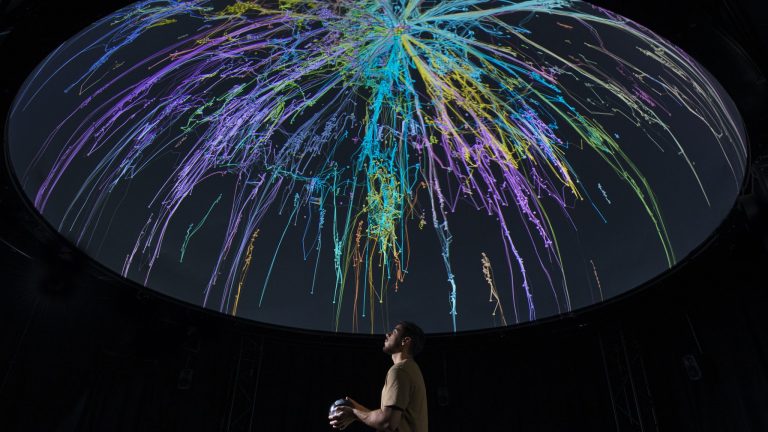
Computational Museology: Cultural Heritage and the Digital Museum
15.00 – 17.00 CET, 4 April 2024, Online on Zoom (register)
This lecture curated by Sarah Kenderdine explores key themes including interactive archives and emergent narrative, deep fakes and blockchain sovereignties, embodied knowledge systems and performative interfaces and scientific visualisation for museums in the age of experience. She will also give an overview of EPFL Pavilions exhibitions and focus the discussion on Deep Fakes: Art and Its Double.
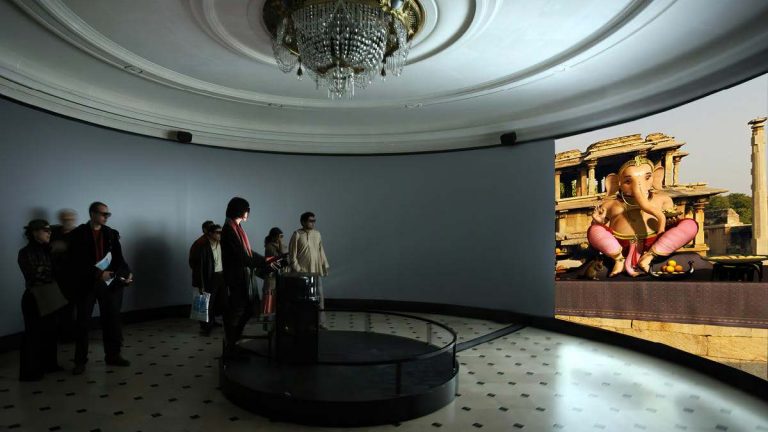
The Hindu – Bengaluru | February 01, 2024
Museologist Sarah Irene Brutton Kenderdine, in Bengaluru recently to deliver a lecture, speaks about how technology is altering not only the way we view museums, but also culture and history in a broader sense.
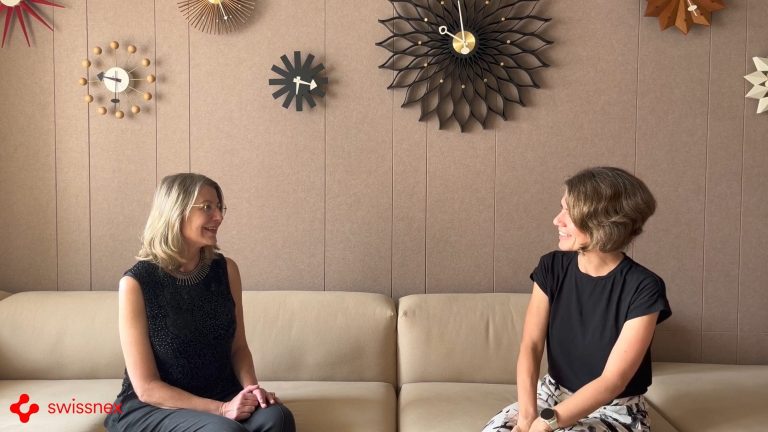
SWISSNEX IN INDIA, CONSULATE GENERAL OF SWITZERLAND
We had the opportunity to interview Sarah Kenderdine — Professor of Digital Museology at EPFL, Switzerland – at our Bengaluru office in January 2024. During her visit, she also gave a lecture titled ‘Museums in the Age of Experience’ at the Science Gallery Bengaluru.
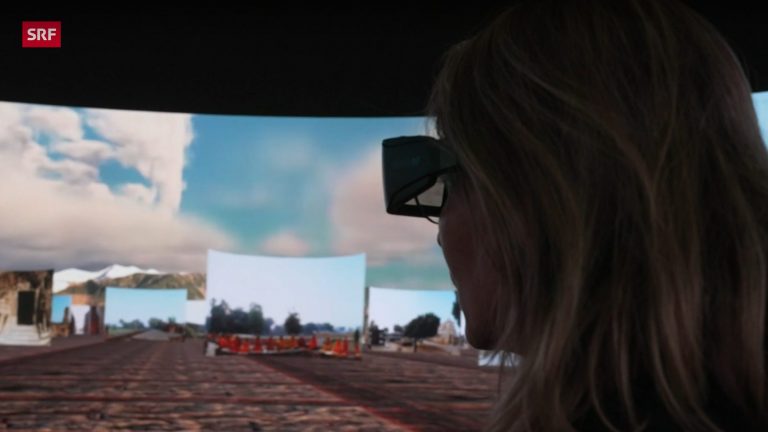
If there is one person in Switzerland who is passionate about immersion, it is Sarah Kenderdine. It operates from the EPFL in Lausanne and has its own LAB, which is primarily concerned with the museum of the future, be it immersive, augmented or entirely virtual. She is currently in the process of implementing several projects, including converting the Battle of Murten panorama into a virtual experience. Or to resurrect one of the first world exhibitions in Paris in 1867 through stereoscopic images. In previous works, she has also reconstructed the destroyed Buddhas of Bamiyan and resurrected the site of Palmyra in Syria in the museum. She has also converted the Montreux Jazz Festival Collection into a tangible, interactive application.
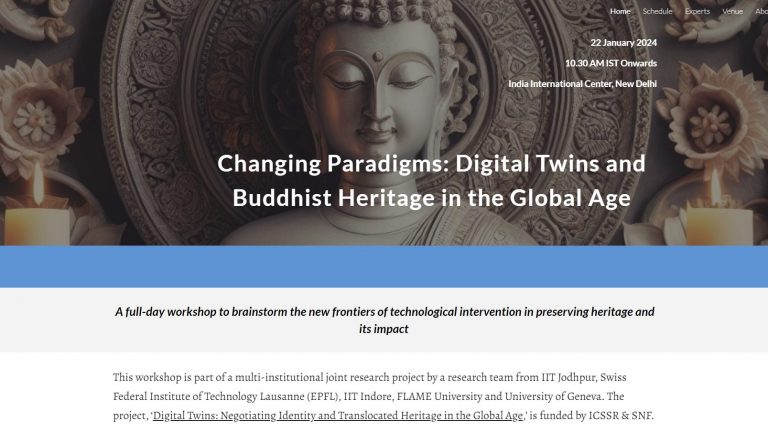
A full-day workshop to brainstorm the new frontiers of technological intervention in preserving heritage and its impact, 22 January 2024, India International Center, New Delhi.
This workshop is part of a multi-institutional joint research project by a research team from IIT Jodhpur, Swiss Federal Institute of Technology Lausanne (EPFL), IIT Indore, FLAME University and University of Geneva. The project, ‘Digital Twins: Negotiating Identity and Translocated Heritage in the Global Age,’ is funded by ICSSR & SNF.
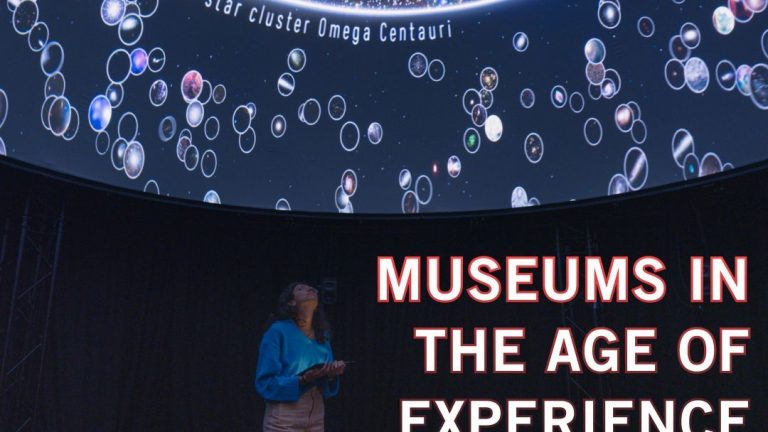
In a landmark event on 19 January 2024, Science Gallery Bengaluru inaugurates its new building with a lecture titled ‘Museums in the Age of Experience’ by Prof. Sarah Kenderdine. In this lecture, Prof. Kenderdine explores how computational methods are reshaping traditional curation, propelling museums into the future by seamlessly blending the tangible with the digital. She will also give an overview of EPFL Pavilions exhibitions and focus the discussion on Cosmos Archaeology: Explorations in Time and Space.
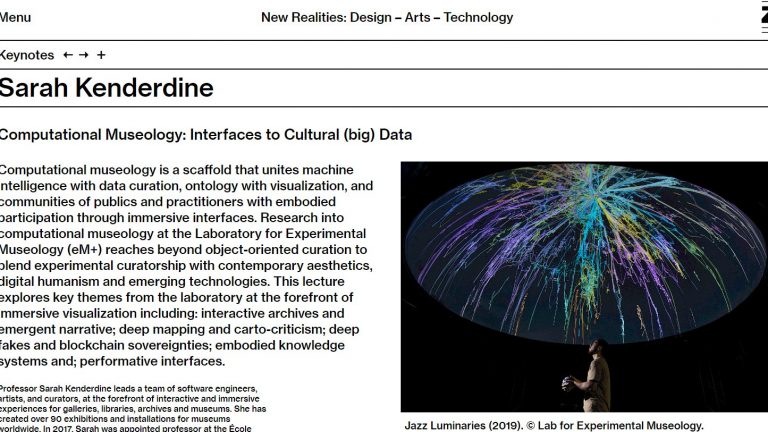
9 November 9 2023, Zurich University of the Arts
Computational museology is a scaffold that unites machine intelligence with data curation, ontology with visualization, and communities of publics and practitioners with embodied participation through immersive interfaces. Research into computational museology at the Laboratory for Experimental Museology (eM+) reaches beyond object-oriented curation to blend experimental curatorship with contemporary aesthetics, digital humanism and emerging technologies. This lecture explores key themes from the laboratory at the forefront of immersive visualization including: interactive archives and emergent narrative; deep mapping and carto-criticism; deep fakes and blockchain sovereignties; embodied knowledge systems and; performative interfaces.
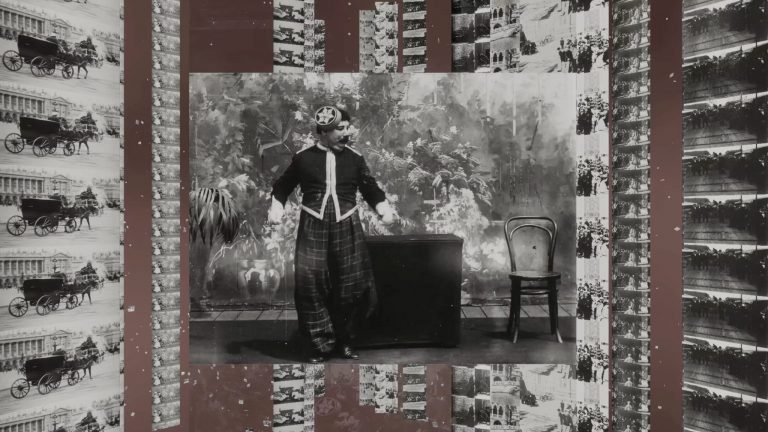
With generous support from the SNF Sinergia project Narratives From the Long Tail: Transforming Access to Audiovisual Archives, we are very pleased to invite you to join one or all of three unique events from our seminar series. In involving 40 seminal speakers from across the world, together with film screenings and exhibition tours—do join us in the week of 25-29 September 2023 inclusive. All events are located at the stunning EPFL Pavilions or the Laboratory for Experimental Museology EPFL in Lausanne. Click to read detailed information and register now!
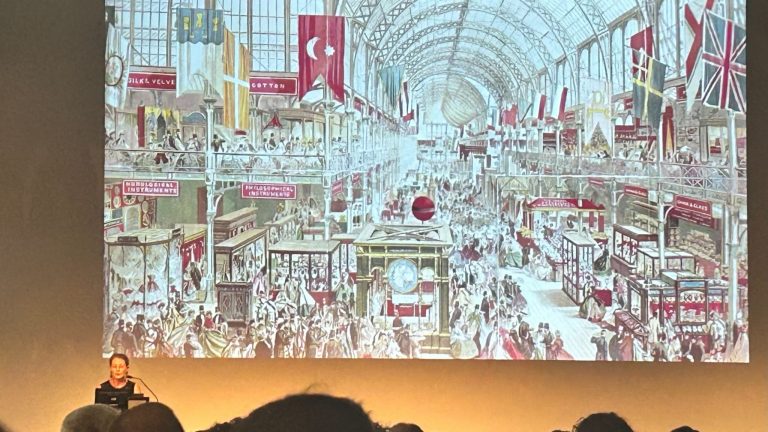
Two fantastic keynote lectures opened and closed DH2023: the opening was by Professor Sarah Kenderdine, entitled “Two-Fold Revolutions: Computational Museology in the Age of Experience”, and the closing was delivered by Claire Fernandez, entitled “Contesting Power in the Digital Age: The Role of Civil Society in Europe”.
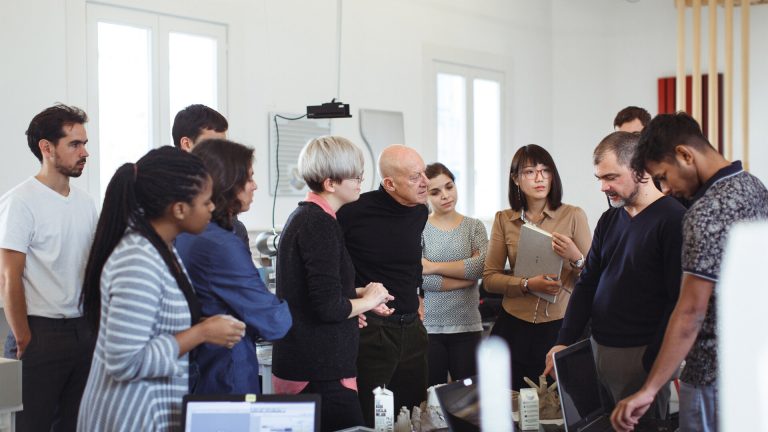
Since the launch of the Norman Foster Foundation in 2017, its mission has been to promote interdisciplinary thinking and research to help new generations to anticipate the future. In order to respond to the growing importance of urbanisation and its challenges, we embark upon a new initiative, the Norman Foster Institute. Professor Sarah Kenderdine is of The Academic Chairs.
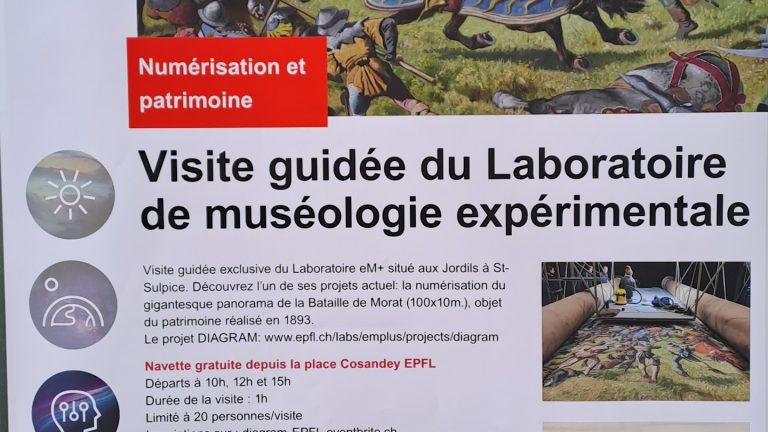
During the EPFL Open Days (April 29-30, 2023), 120 visitors got the opportunity to get a special tour of the lab and the gigantic Panorama of the Battle of Murten! Click the link on the title to see a timelapse of the visit!
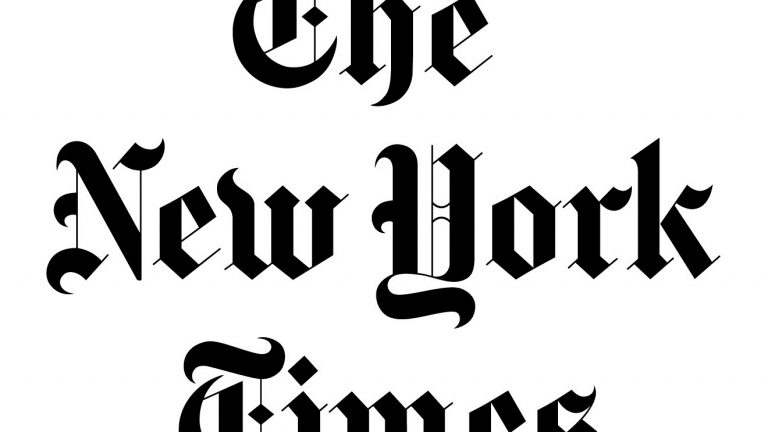
Experiential art spaces are cropping up worldwide. Critics pan them, audiences love them and they have the attention of the art world. In Switzerland, there is a laboratory dedicated to the development of immersive exhibitions. At the École Polytechnique Fédérale de Lausanne, Sarah Kenderdine, a professor of digital museology, and her team are researching the best ways to use digital technology for better curatorship, whether by encouraging museum visitors to interact with the exhibits and each other or by finding better ways for the public to access a museum’s collection.
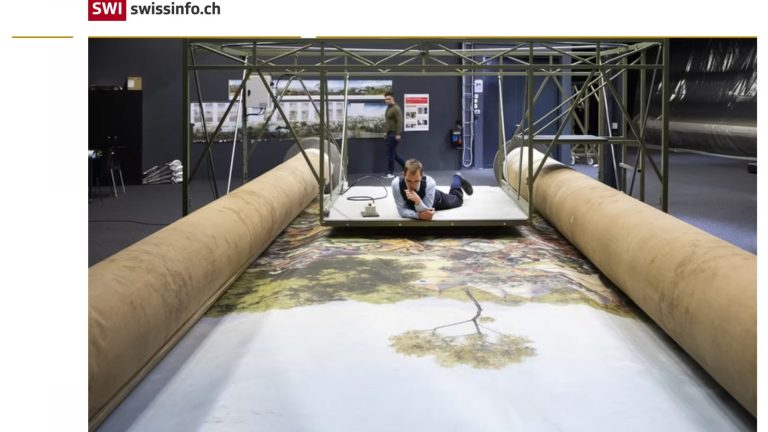
Murtenschlacht Panorama [Panorama of the Battle of Murten] is a huge circular painting depicting the victory near Bern of the Swiss cantons over the Duke of Burgundy, “Charles the Bold”, in 1476. Produced by the German painter Louis Braun in 1893, the 10m x 100 m canvas is stocked on several giant rolls each weighing 700 kg. Following restoration work, scientists at the Federal Institute of Technology Lausanne (EPFL) will begin digitisationExternal link of the painting this August.
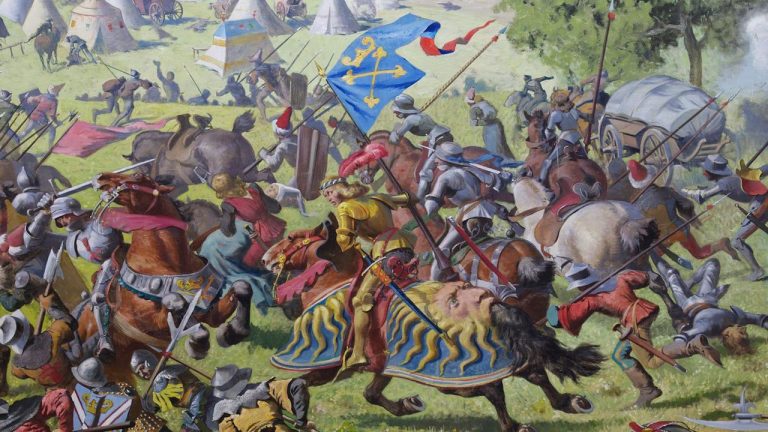
Avis dexperts | 25/04/2023
Avec Daniel Jaquet
La Bataille de Morat, cʹest un des événements clés de lʹhistoire Suisse. Une bataille et une victoire remportée le 22 juin 1476 par les confédérés suisses face au duc Charles le Téméraire dans le cadre des guerres de Bourgogne.
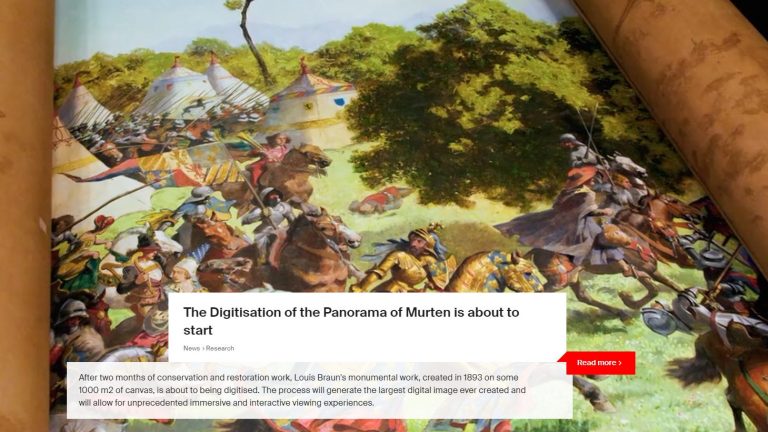
EPFL News | 25.04.2023
After two months of conservation and restoration work, Louis Braun’s monumental work, created in 1893 on some 1000 m2 of canvas, is about to being digitised. The process will generate the largest digital image ever created and will allow for unprecedented immersive and interactive viewing experiences.
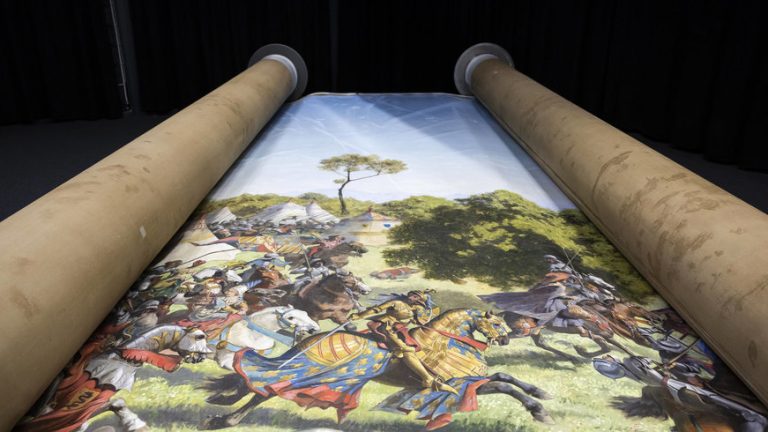
Le Temps avec l’ATS | 25.04.2023
L’œuvre titanesque du peintre allemand Louis Braun représentant la victoire des Confédérés contre Charles le Téméraire en 1476, exposée pour la dernière fois lors de l’Expo.02, va devenir, une fois scannée la plus grande image digitale jamais créée
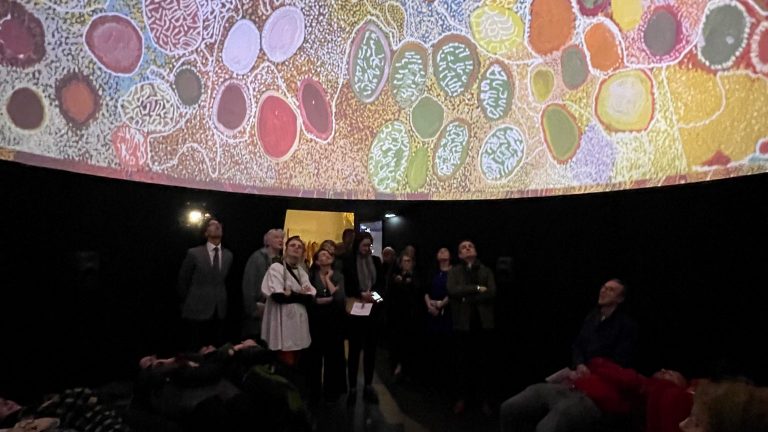
“Songlines. Chant des pistes du désert australien” est une exposition itinérante internationale produite par le National Museum of Australia avec le soutien constant des gardiens traditionnels de la Loi et des savoirs aborigènes sur l’histoire des Sept Sœurs.
Lieu : Galerie Jardin
Dates : Du mardi 04 avril 2023 au dimanche 02 juillet 2023
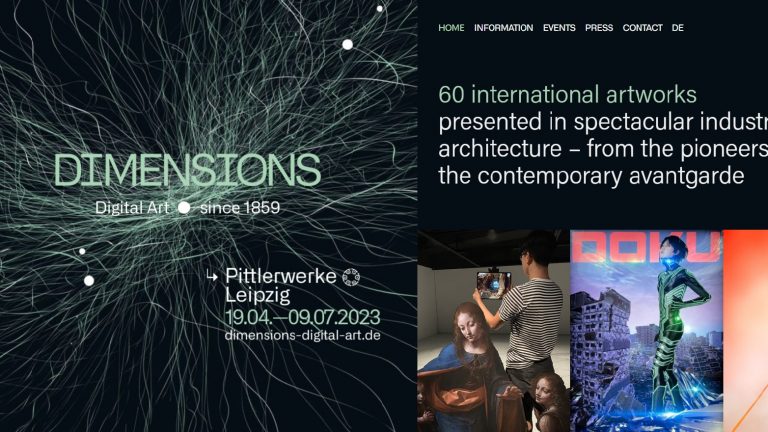
Leonardo da Vinci’s Virgin of the Rocks AR (LDV.VOTR.AR), 2019, the artwork of Sarah KENDERDINE & Jeffrey SHAW is on show at Pittlerwerke, Leipzig, April 19 – July 09 2023.
Digitalization has always embraced art; and today, artists worldwide are creating new digital spaces and narratives. DIMENSIONS shows how art has been shaped by the dialogue between new technologies and artistic forms of expression throughout history.
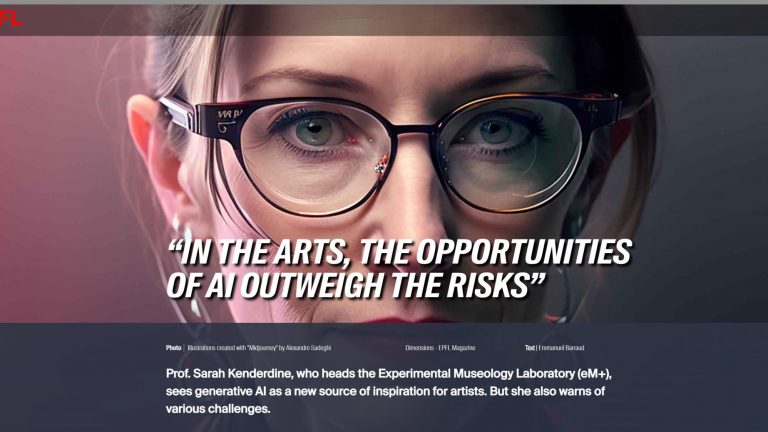
Newly released online interfaces have brought powerful artificial intelligence programs within everyone’s reach. In EPFL’s recent issue of Dimensions, we look at what could make 2023 a watershed year in our relationship with algorithms. “IN THE ARTS, THE OPPORTUNITIES OF AI OUTWEIGH THE RISKS” Prof. Sarah Kenderdine, who heads the Experimental Museology Laboratory (eM+), sees generative AI as a new source of inspiration for artists. But she also warns of various challenges.

The opening of Lighten Up! On Biology and Time will be celebrated on Thursday 23 March at EPFL Pavilions and Forum Rolex with speeches by the four curators, an address by Professor Till Roenneberg and a late-night opening of the exhibition until 9 pm.
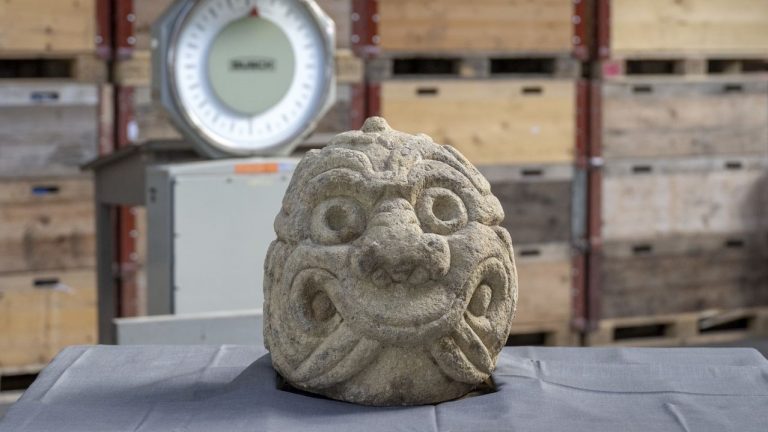
Le remplacement par des copies? Frises du Parthénon, sculptures remarquables, Pierre de Rosette, buste de Néfertiti, nombreuses sont les pièces majeures conservées dans les musées qui ne sont pourtant pas près d’être rendues. Pourquoi ne pas en faire des copies, et rendre les originaux? La question suscite une levée de boucliers, alors même que les technologies disponibles, certaines présentées récemment à l’EPFL dans l’exposition “Deep Fakes”, sont absolument stupéfiantes.
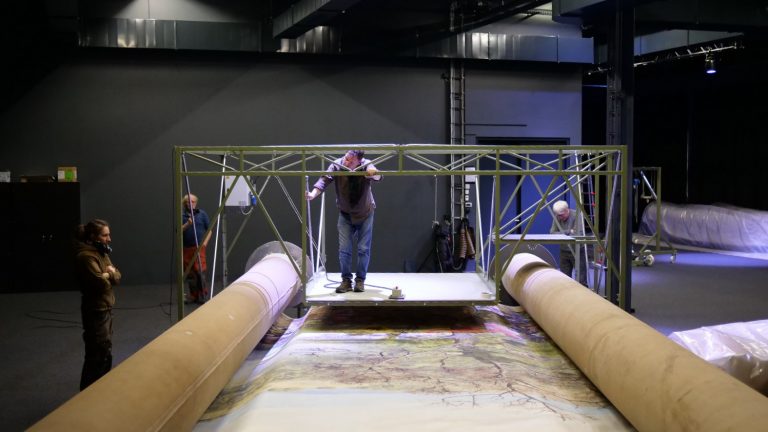
Our project enters the conservation phase. We have built an inspection platform which will allow the conservation team to prepare the 1.000 m2 of painting for the digitalisation phase (April 2023). Watch the timelapse video of the rig by clicking on the title.
This inspection platform was designed for the project by engineer specialists. It is motorised and automated, fully equipped to the highest conservation standards. The same system will be used for the digitalisation phase, with another platform made to measure to allow the imaging with our sponsor Phase One, leader for cultural heritage imaging technologies.
Stay tuned for the next phase and book the dates if you would like to get the chance to view the painting during the EPFL Open Days (29-30 April 2023).
